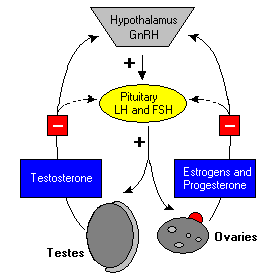“The best and most efficient pharmacy is within your own system.”
-Robert C. Peale
Mark, the Pharmacist
This weekend Mark turned to me and said, “I advise any customer who asks, not to take hormones as they just don’t work.” “There are much better, more natural options, to improve the health of the hormonal system” he continued.
This caught my attention. Why? Because Mark is a pharmacist, and a big part of his business is filling prescriptions for hormone creams and gels. He sees patients every day with hormonal issues and knows what works and what doesn’t.
This is why, even though he sells hormonal creams and gels, he educates every curious customer about effective herbal and whole food nutritional options to balance their hormonal system – the same techniques we use in our office.
Mark is a unique guy and that is why we began a friendship a few years ago. And you would have to be unique to be a pharmacist who recommends that people don’t turn to drugs as a first resort!
Why would Mark tell his patients this?
Here is what he understood:
Sex hormones, estrogen and progesterone in females and testosterone in males, are largely produced in the sex glands, the ovaries in women and testes in men.
The production of these hormones is under the control of the entire hormonal system. The hormonal system includes two parts of the brain, the hypothalamus and pituitary, that are often referred to as the master control centers of the hormonal system.
As this illustration shows, to make a hormone the hypothalamus talks to its neighbor , the pituitary, which then sends a message to the ovaries and testes to produce their respective sex hormone.

You can think of this as a game of telephone with one organ talking to the next until the hormone is produced.
The pattern goes:
HYPOTHALAMUS –> PITUITARY –> OVARY/TESTES –> HORMONES
This is how the game of telephone works in a healthy hormonal system.
What happens when we take hormonal pills and creams?
Normally the estrogen, progesterone and testosterone produced at the end of the game of telephone, talkback to the hypothalamus and pituitary, the organs that began the game of telephone, to tell them enough hormones have been made and the hormonal system can now take a break (shown by red minus signs for stop in the graphic).
The game of telephone is over and hormone production stops.
This works a lot like the AC unit in your home. When you set the desired temperature on the thermostat to 72, the AC will turn on and cool the room until the temperature inside reaches 72. At this point, the AC unit will turn off.
Similarly our hormonal system will turn on, and start a game of telephone, until we have produced the right amount of hormones that corresponds to our “set point” — at which point the system will turn off and rest.
What about hormone creams and gels?
When we apply hormone creams and gels, the testosterone, estrogen and progesterone from the drugs are present in an unnatural way in our blood stream.
These hormones in our blood, although not made by the body, still have the ability to shut off the game of telephone by telling the hypothalamus and pituitary to take a break. Think red minus sign from the picture.
This stops your body’s own hormonal production. Why?
Just like the AC unit turns off when there is enough cold air, the ovaries and testes will turn off when there is enough hormones in the body — even if those hormones come from creams or gels.
So often, people taking hormonal creams and gels to improve their hormonal system end up shutting down their own production of the very hormones they were low in to begin with. 🙁
While the addition of hormones and creams can often result in noteworthy short term improvements – usually 3-9 months – the long term effects can actually be the reverse of the intended outcomes.
What other options do we have?
The natural approach to supporting our hormonal system has two main components:
- Find out why the body is not producing the needed hormones in the first place and identify the cause, (sugar and stress are two major causes as well as the lack of minerals and healthy fats) then
- Support the organ systems with herbal and whole food nutritional support
The result?
In Mark’s case, he followed this plan himself and raised his testosterone from under 200 which is well below normal to 650 in 6 months of treatment— a very good number for a middle aged male.
This is proof once again of our incredible ability to heal ourself — naturally.
While there are times taking hormone pills, creams and gels can be the right strategy, in my opinion this should always be done as a short term strategy while simultaneously rebuilding the body’s own hormonal system and supporting our innate ability to produce our own hormones, as needed.
